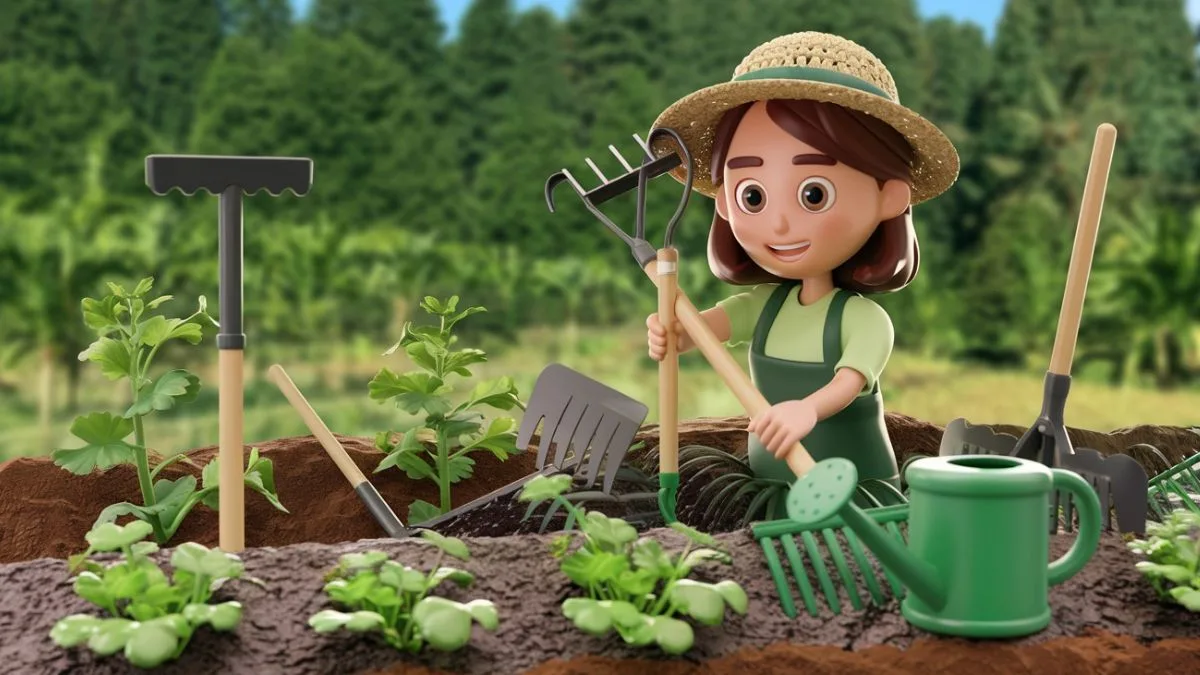
In today’s world, where environmental concerns are at the forefront, many homeowners are turning to sustainable gardening practices to create eco-friendly, beautiful, and productive outdoor spaces. Sustainable gardening is not just a trend; it’s a way to reduce your carbon footprint, conserve natural resources, and contribute to the health of the planet. Whether you’re a seasoned gardener or a beginner, these eco-friendly tips will help you transform your backyard into a sustainable haven.
1. Choose Native Plants for sustainable gardening
Native plants are well-adapted to the local climate and soil conditions, making them an excellent choice for sustainable gardening. They require less water, fertilizer, and pesticides, which reduces the impact on the environment. Additionally, native plants provide essential habitat for local wildlife, including pollinators like bees and butterflies. When planning your garden, research native species that thrive in your region to create a resilient and low-maintenance landscape.
2. Conserve Water for sustainable gardening
Water is a precious resource that must be carefully managed in sustainable gardening. Implementing water-saving techniques not only benefits the environment but also reduces your water bills. Consider the following strategies:
- Mulching: Apply a layer of organic mulch around your plants to retain soil moisture, reduce evaporation, and suppress weeds.
- Drip Irrigation: Reduce water loss with a drip irrigation system that efficiently delivers water to your plants’ roots.
- Rainwater Harvesting: Capture rainwater in barrels and utilize it to nourish your garden. Rainwater is free of chemicals found in tap water, making it ideal for plants.
- Drought-Tolerant Plants: Incorporate drought-tolerant plants into your garden design to reduce the need for frequent watering.
3. Compost for Healthy Soil
Composting is a sustainable practice that transforms food scraps and yard waste into a valuable soil amendment. By composting kitchen scraps, yard waste, and other biodegradable materials, you create nutrient-rich compost that improves soil structure, retains moisture, and enhances plant growth. Healthy soil reduces the need for chemical fertilizers, which can harm the environment. Set up a compost bin in your backyard and start turning waste into valuable garden gold.
4. Use Organic Fertilizers and Pesticides
Conventional fertilizers and pesticides can have harmful effects on the environment, including water pollution and harm to beneficial insects. opt for organic fertilizers and natural pest control methods to keep your garden healthy and eco-friendly. Organic fertilizers, such as compost, manure, and bone meal, release nutrients slowly, providing long-term benefits to plants. For pest control, introduce beneficial insects like ladybugs, use neem oil, or create homemade insecticidal soap.
5. Reduce Lawn Size
Lawns are known for their resource demands, requiring substantial amounts of water, fertilizer, and maintenance. Reducing the size of your lawn or eliminating it altogether can significantly reduce your garden’s environmental impact. Replace grassy areas with native plants, wildflowers, or a vegetable garden. You can also incorporate ground covers, gravel, or permeable pavers to create functional and visually appealing spaces with minimal upkeep.
6. Plant Trees for Shade and Energy Savings
Trees play a vital role in sustainable gardening by providing shade, reducing the need for air conditioning, and sequestering carbon dioxide. Planting trees strategically around your home can lower your energy bills and create a cooler microclimate in your backyard. Choose deciduous trees that provide shade in the summer and allow sunlight to filter through in the winter.
7. Create a Wildlife-Friendly Habitat
A sustainable garden is one that supports local wildlife. Provide food, water, and shelter for birds, insects, and other creatures by planting a variety of native plants, installing bird feeders, and creating a small pond or water feature. Avoid using chemical pesticides that can harm wildlife, and instead, encourage natural predators to keep pests in check. By creating a wildlife-friendly habitat, you contribute to biodiversity and the overall health of the ecosystem.
8. Practice Crop Rotation and Companion Planting
For those who grow vegetables, crop rotation and companion planting are essential techniques for maintaining soil health and preventing pest problems. Crop rotation is a gardening technique that involves switching the plants grown in different areas each year to maintain soil health and minimize pest and disease problems. Companion planting involves growing plants together that benefit each other, such as planting basil near tomatoes to repel pests. These practices promote a balanced and resilient garden ecosystem.
9. Use Sustainable Garden Tools
When selecting garden tools, opt for those made from sustainable materials like bamboo, recycled plastic, or metal. Invest in high-quality tools that will last longer, reducing the need for frequent replacements. Additionally, consider using manual tools instead of power tools to save energy and reduce noise pollution.
10. Engage in Community Gardening
If you have limited space in your backyard, consider joining a community garden. Community gardening not only provides access to fresh produce but also fosters a sense of community and shared responsibility for the environment. Working together with others to grow food and beautify shared spaces is a rewarding and sustainable way to contribute to your local environment.
Conclusion
Sustainable gardening is a rewarding and impactful way to make a positive difference in the world. By adopting eco-friendly practices in your backyard, you can create a beautiful and productive garden that conserves resource, supports wildlife, and reduces your environmental footprint. Start small by incorporating one or two of these tips into your gardening routine, and gradually build a garden that thrives in harmony with nature.
About Earthwide Lifestyle
Earthwide Lifestyle is your go-to resource for sustainable living tips, eco-friendly gardening ideas, and lifestyle inspiration. Explore our blog for more articles on how to live a greener, more sustainable life.